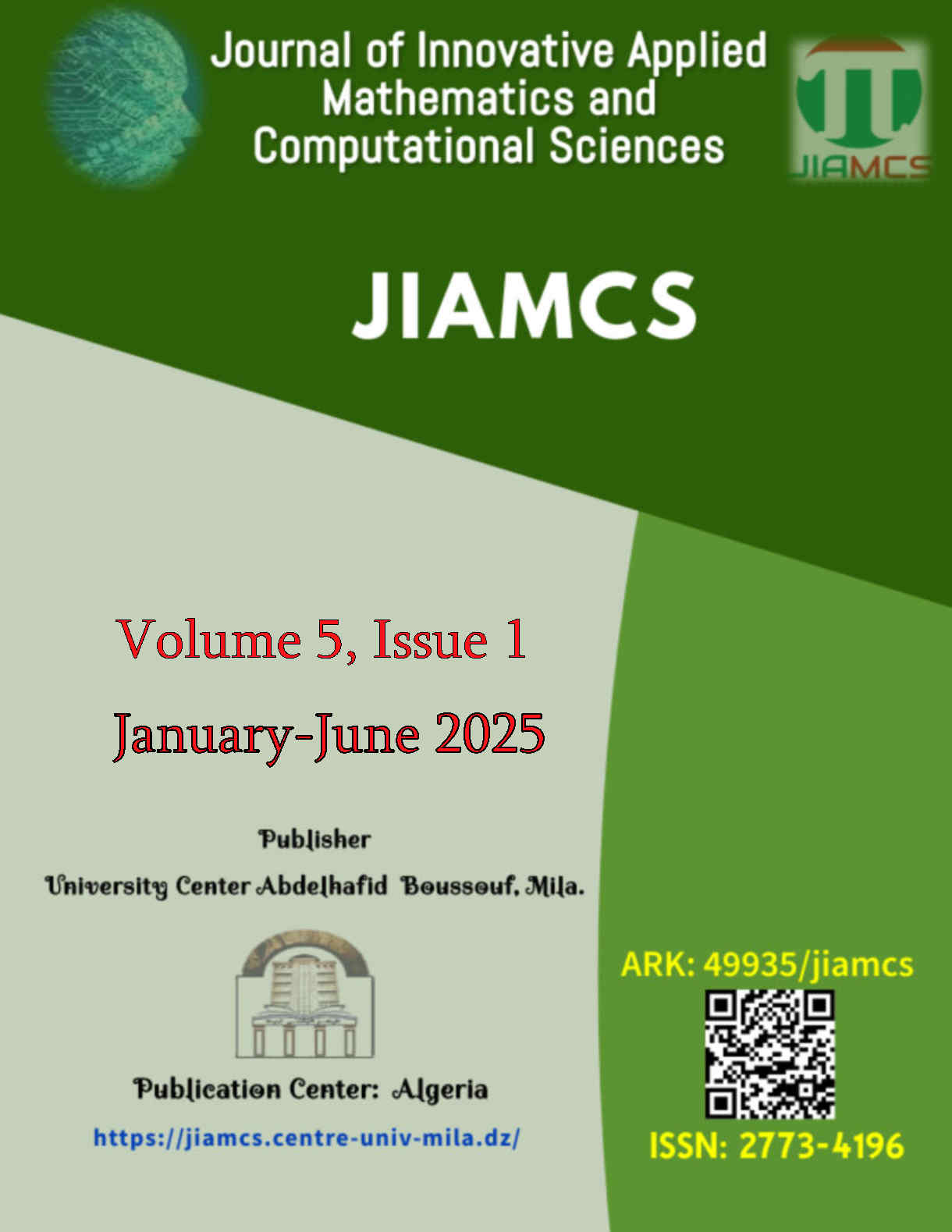Refining Euler and fourth-order Runge-Kutta methods using curvature-based adaptivity
Main Article Content
Abstract
This paper introduces curvature-adaptive variants of both the Euler and Runge-Kutta methods for solving ordinary differential equations (ODEs). By incorporating local curvature information into step size selection, the proposed Curvature-Adaptive Euler (CAE) and Curvature-Adaptive fourth-order Runge-Kutta (CARK4) methods achieve a superior balance between accuracy and computational efficiency compared to their fixed-step counterparts. The unified curvature adaptation framework presented in this work enhances classical ODE solvers by leveraging the geometric properties of the solution curve, resulting in more efficient numerical integration schemes.
Downloads
Article Details

This work is licensed under a Creative Commons Attribution-NonCommercial-NoDerivatives 4.0 International License.
- Authors keep the rights and guarantee the Journal of Innovative Applied Mathematics and Computational Sciences the right to be the first publication of the document, licensed under a Creative Commons Attribution-NonCommercial-NoDerivatives 4.0 International License that allows others to share the work with an acknowledgement of authorship and publication in the journal.
- Authors are allowed and encouraged to spread their work through electronic means using personal or institutional websites (institutional open archives, personal websites or professional and academic networks profiles) once the text has been published.
References
V. I. Arnold, Geometrical Methods in the Theory of Ordinary Differential Equations, Springer, (1988).
https://doi.org/10.1007/978-1-4612-1037-5
J. C. Butcher, Numerical Methods for Ordinary Differential Equations, Wiley, (2008).
https://doi.org/10.1002/9781119121534
M. S. Chandio, A. G. Memon, Improving the efficiency of Heun’s Method, Sindh University Research Journal (Science Series), 42(2) (2010).
https://sujo.usindh.edu.pk/index.php/SURJ/article/view/6158
C. Chun, B. Neta, Comparative study of eighth-order methods for finding simple roots of nonlinear equations, Numerical Algorithms, 74(4) (2017), 1169–1201.
https://doi.org/10.1007/s11075-016-0191-y
M. P. do Carmo, Differential Geometry of Curves and Surfaces, Prentice-Hall, (1976).
ISBN: 9780486806990
E. Hairer, S. P. Nørsett, G. Wanner, Solving Ordinary Differential Equations I: Nonstiff Problems, Springer, (1993).
https://doi.org/10.1007/978-3-540-78862-1
A. B. M. Hamed, I. Yuosif, I. A. Alrhaman, I. Sani, The accuracy of Euler and modified Euler technique for first-order ordinary differential equations with initial condition, American Journal of Engineering Research, 6 (2017), 334–338.
https://www.ajer.org/papers/v6(09)/ZN0609334338.pdf
M. A. Islam, Accuracy analysis of numerical solutions of initial value problems (IVP) for ordinary differential equations (ODE), IOSR Journal of Mathematics, 11(3) (2015), 18–23.
https://doi.org/10.9790/5728-11331823
E. Kreyszig, Differential Geometry, Dover Publications, (1991).
ISBN: 0486667219
J. D. Lambert, Numerical Methods for Ordinary Differential Systems: The Initial Value Problem, John Wiley & Sons, (1991).
ISBN: 0471929905
R. J. LeVeque, Finite Difference Methods for Ordinary and Partial Differential Equations: Steady-State and Time-Dependent Problems, SIAM, (2007).
https://doi.org/10.1137/1.9780898717839
Z. Memon, M. Chandio, S. Qureshi, On consistency, stability and convergence of a modified ordinary differential equation solver, Sindh University Research Journal (Science Series), 47(4) (2015).
https://sujo.usindh.edu.pk/index.php/SURJ/article/view/5237
P. K. Pandey, A new computational algorithm for the solution of second-order initial value problems in ordinary differential equations, Applied Mathematics and Nonlinear Sciences, 3(1) (2018), 167–174.
https://doi.org/10.21042/AMNS.2018.1.00013
L. Perko, Differential Equations and Dynamical Systems, Springer, (2001).
ISBN: 0387951164
W. H. Press, S. A. Teukolsky, W. T. Vetterling, B. P. Flannery, Numerical Recipes: The Art of Scientific Computing, Cambridge University Press, (2007).
ISBN: 0521880688
A. Quarteroni, R. Sacco, F. Saleri, Numerical Mathematics, Springer, (2007).
https://doi.org/10.1007/b98885
M. Spivak, A Comprehensive Introduction to Differential Geometry, Vol. 1, Publish or Perish, (1970).
ISBN: 0914098705




